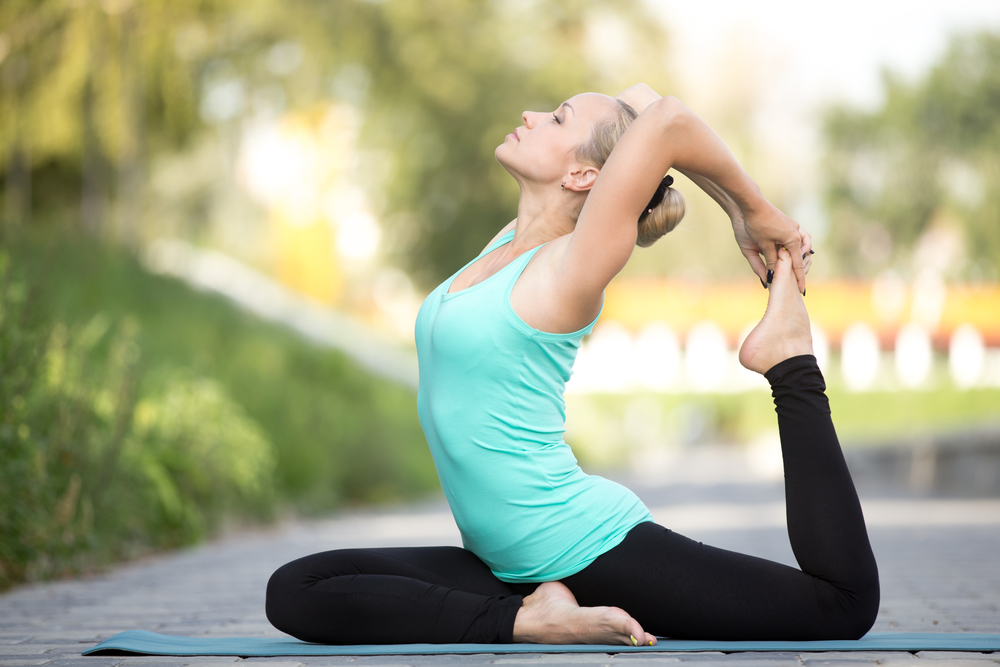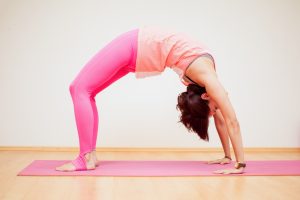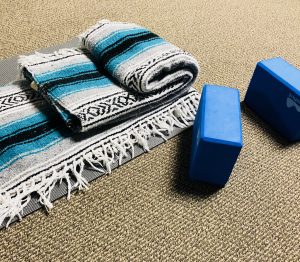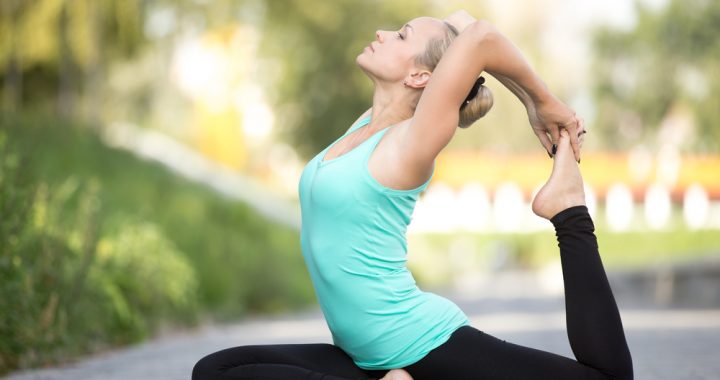 It’s no secret that I’m a fan of yoga and that I apply yoga principles and postures in my own life as well as with my patients. And I double down that yoga asana is for everyone who is interested- whether in the broad spectrum of normal (what does that even mean?) to those who identify as being ‘tight’ or ‘flexible’ when it comes to movement.
It’s no secret that I’m a fan of yoga and that I apply yoga principles and postures in my own life as well as with my patients. And I double down that yoga asana is for everyone who is interested- whether in the broad spectrum of normal (what does that even mean?) to those who identify as being ‘tight’ or ‘flexible’ when it comes to movement.
As someone who analyzes movement for a living (and who needs lots of props in my personal practice), I’m in awe when I see someone with the strength, flexibility and body awareness to strike a pose without stiffness as a factor. On the flip side, I cringe when I see someone resting at their joint’s end range rather than using muscular control. For people with more flexibility, it’s often possible to achieve increased depth and range in yoga postures. However, depth without control may result in too much stress on the joint and its supportive structures (looking at you, hips and shoulders). While our bodies are meant to move freely in lots of directions, repeated stress at end ranges in some positions can sideline you from yoga asana and all of the other things you love to do. A few things to keep in mind to help you get what you want out of your practice without adverse effects (and no, my body does not bend this way- if yours does or doesn’t, it’s all good):
 Control! So this applies to both my peeps who feel a little on the stiff side as well- but is also REALLY important for those who don’t feel limitations at the end range of postures and/ or are pushing to get as deeply as they can (if this sounds like you, check out Dr. Ginger Garner’s posts on the hip and yoga here). If you are ‘resting’ at the bottom of your lunge or Warrior poses, try a shorter or less deep range of the posture to focus on your muscles working rather than ‘hanging out’ in the posture. Be mindful of how you get into your postures- are you controlling the movement in your shoulders, spine and hips, or are you flopping in or out of the movement? Are you holding your breath? When we are looking at movement in the clinic, the transitions in and out of the pose are of equal importance to the posture itself.
Control! So this applies to both my peeps who feel a little on the stiff side as well- but is also REALLY important for those who don’t feel limitations at the end range of postures and/ or are pushing to get as deeply as they can (if this sounds like you, check out Dr. Ginger Garner’s posts on the hip and yoga here). If you are ‘resting’ at the bottom of your lunge or Warrior poses, try a shorter or less deep range of the posture to focus on your muscles working rather than ‘hanging out’ in the posture. Be mindful of how you get into your postures- are you controlling the movement in your shoulders, spine and hips, or are you flopping in or out of the movement? Are you holding your breath? When we are looking at movement in the clinic, the transitions in and out of the pose are of equal importance to the posture itself.

Blanket & blocks
Say it with me- Stability before Mobility: Make sure your foundation is strong, so that when you build on it you are able to move through the pose safely. Meaning, before you push into downward-facing dog, make sure that your starting point is solid- chin slightly tucked, shoulder blades and hips supported, and able to control your transition without holding your breath or bulging your abdomen. Or you can use a wall or chair to change how the pose feels for you. Control with transitions becomes further important if you are practicing in a flow class- shoulder strength and coordination is required for moving in and out of downward-facing dog from plank and chataranga, not to mention the endurance required for a full class. If you find that you have some challenges moving in and out of a posture, find a wall to try out some variations that allow you to flow through your practice while maintaining good trunk and joint control.
No pain, no gain does not apply: Feeling muscle soreness or being challenged by a pose or series can be normal, just like with other types of exercise or movement. If you are feeling strain or pain when you are in a posture, pay attention. That doesn’t mean you need to stop that posture, or that yoga is bad for you, or that you need to stop practicing yoga altogether. Ask the instructor for a variation, pay attention to how you are moving, and if the sensation persists or worsens, see your physical therapist to identify the cause and for tips to returning to practice. As an important note, pain-free doesn’t always mean risk-free, so if you are hanging out at the end ranges of your joints and/ or are forcing your body into postures on the regular but it feels okay, try some of the above strategies to minimize repeated stress on your joints.
 We all come to the mat with different abilities and skills- being more flexible isn’t a bad thing! Kristin is more stretchy than I am, and we both enjoy working with bodies of varying joint mobility. Lots of yogis practicing are doing so safely and comfortably, and you can too. For some great online yoga content from yoga instructors who are also physical therapists, Shelly Prosko and Dustienne Miller are wonderful resources. Dianne Bondy has excellent content, classes and training for all bodies- I have completed the Yoga For All training and it was a wonderful experience! If you are seeking a fuller understanding of yoga and all of its aspects, Susanna Barkataki and Yogawalla each offer inclusive programs that explore yoga’s roots with a social justice focus. If you are having some difficulty with your practice, have an injury or want one-on-one instruction , work with your physical therapist and coordinate to find a yoga instructor/ yoga therapist who can meet your needs. If you are in the Triangle, come and see me or Kristin at CPHC and give us a call @ (919)-571-9912!
We all come to the mat with different abilities and skills- being more flexible isn’t a bad thing! Kristin is more stretchy than I am, and we both enjoy working with bodies of varying joint mobility. Lots of yogis practicing are doing so safely and comfortably, and you can too. For some great online yoga content from yoga instructors who are also physical therapists, Shelly Prosko and Dustienne Miller are wonderful resources. Dianne Bondy has excellent content, classes and training for all bodies- I have completed the Yoga For All training and it was a wonderful experience! If you are seeking a fuller understanding of yoga and all of its aspects, Susanna Barkataki and Yogawalla each offer inclusive programs that explore yoga’s roots with a social justice focus. If you are having some difficulty with your practice, have an injury or want one-on-one instruction , work with your physical therapist and coordinate to find a yoga instructor/ yoga therapist who can meet your needs. If you are in the Triangle, come and see me or Kristin at CPHC and give us a call @ (919)-571-9912!

